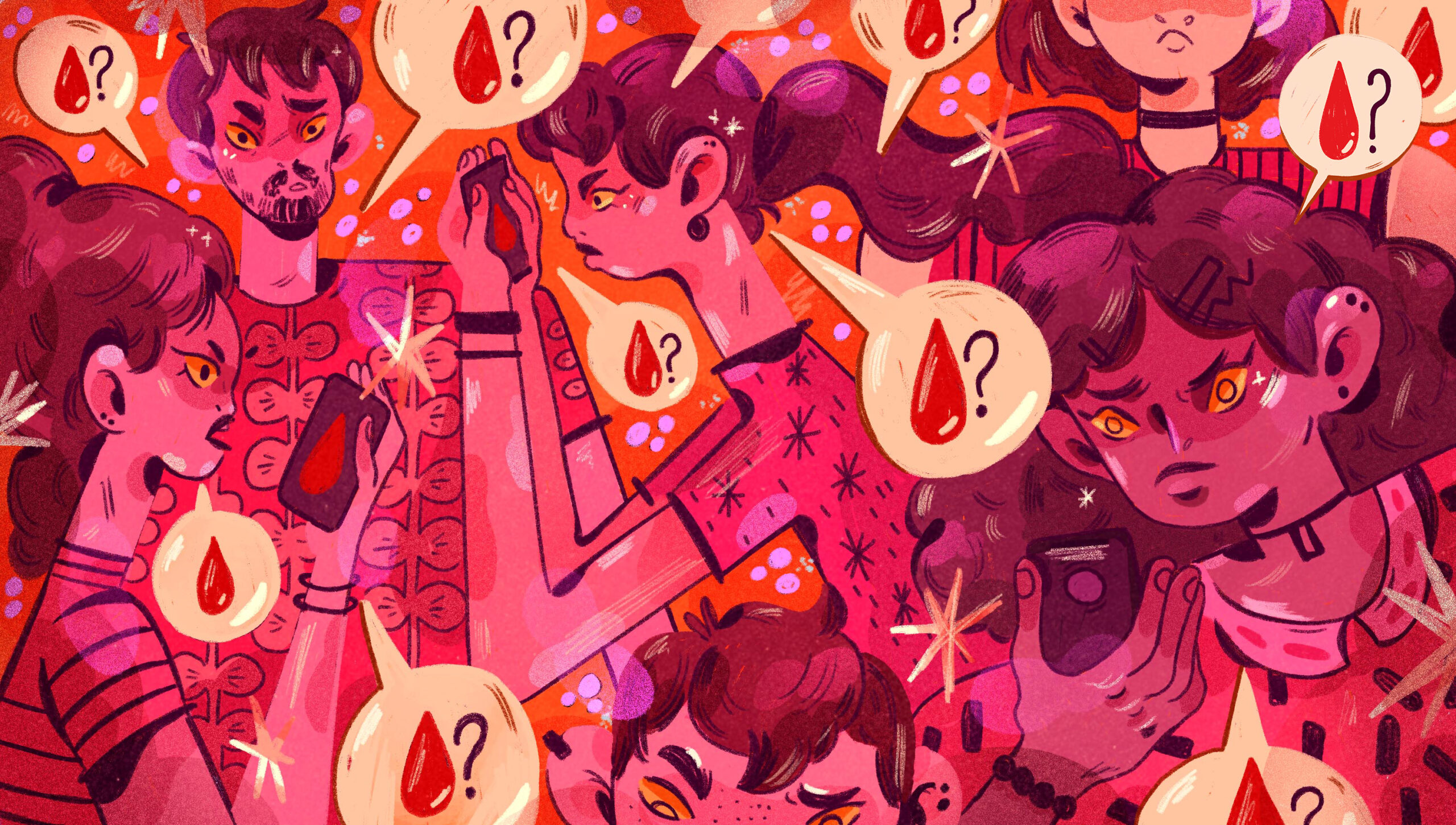This story is part of Seeing Red, a month-long series exploring periods from an LGBTQ2 perspective.
In February 2019, a fresh batch of emojis was announced by Unicode Consortium, the international group that determines, among other things, our global emoji keyboard. Among the new arrivals was a single drop of blood. According to Unicode, the drop can be used to denote medicine, blood donation or the phenomenon for which it was designed: menstruation.
The campaign for a period emoji began in 2017 as part of Plan International UK’s multipronged efforts to destigmatize menstruation. The original emoji proposals, which the public could vote on, included a white pad with blood in the centre, the female reproductive organs, a calendar featuring drops of blood and three blood droplets featuring various cartoon faces. But the winning design, racking up more than 54,500 votes, was a pair of white underwear with two red drops on it. It was submitted to Unicode, which rejected that design for unstated reasons and later introduced the more neutral — and vague — drop of blood.
Emojis have become the way many people communicate — we spend most of our day talking and texting colloquially using these icons. And by transcending language barriers, they can serve as powerful barometers of social attitudes. Initially, emojis were overwhelmingly white, male and Eurocentric in their imagery: blond-haired doctors , a white man waving and white couples . But after public complaints and lobbying over the lack of diversity, Unicode released racially expansive emojis in 2015. The next year, more emojis of women were released, along with more gender equality in the professions represented. This expanded in 2017; hair style and colour options arrived in 2018. And 2019 will see more accessibility emojis, along with interracial, same-sex and gender-neutral couples. (The most explicit queer emoji currently available to users is the rainbow flag.)
These changes reflect our growing cultural awareness of the importance of representation. That’s why the blood drop emoji seemed at first like a missed opportunity. The point was to help destigmatize menstruation, but by choosing an image that doesn’t explicitly signify having a period, Unicode proved that we still can’t talk directly about menses. There are images of poop and a face vomiting , but when it comes to menstruation — a physiological process experienced by a large portion of the population at some point in their lives — squeamishness remains.
Nevertheless, what looks like an institutional cop-out might actually be a blessing in disguise.
Here’s what the blood drop does have going for it: it’s a building block toward a more period-inclusive emoji. It helps us move away from restrictive thinking that only female-identified people have periods. For example, trans women can have period symptoms (sore or swollen chests, abdominal cramps, hot flashes, migraines, bloating) due to hormone replacement therapy (HRT) treatment. Non-binary and masculine-identifying people may still have their period but may not identify with the feminine-coded ideas of menstruation reflected in emoji options like bikini-style underwear or a pad. The blood drop can also hint at period-related symptoms — PMS and premenstrual dysphoric disorder (PMDD, a severe form of PMS) — or that impending “time of the month.” It can then become a signifier of the numerous experiences we have with our periods, and help shape larger attitudes about gender and inclusion.
Even without an explicit period emoji, menstruators can co-opt other emojis to describe it. Eggplants, peaches, and tulips are used to flirt or sext, the “WC” emoji, meant to symbolize the washroom, is interpreted as “woman crush” and the painted fingernails suggest fanciness, sass and nonchalance. Menstruators might likewise combine the blood drop with an anguished or weary face, a syringe , a vampire or a crescent moon to say more about their period with the little that is currently available. The range of possibilities and combinations relieves the need for one emoji to explicitly indicate everyone’s unique experience.
In being nothing to no one, the blood drop emoji has the potential to be something for everyone: an image that better represents the experience of menstruation for all, regardless of gender. Users can decide how to co-opt it, all the while lobbying for more period-related emojis.

This story is part of Seeing Red, a month-long series exploring periods from an LGBTQ2 perspective.


 Why you can trust Xtra
Why you can trust Xtra


